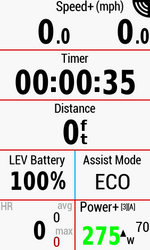PassoGavia
Member
- Region
- USA
- City
- Roswell, Georgia
I currently ride a 2019 Orbea Gain road e-bike, and am thinking of buying a Turbo Creo. I’ve put 9000 miles on the Gain, and I love it except for exactly one thing: the 20 MPH cutoff. There are some group rides where I keep up fine except on long (over one mile) flat sections. I can ride in a pack at 20+ MPH for about a mile but then I gas out and get dropped. The Creo, as a Class 3 bike (I'm in the US), should enable me to hold my position and not get dropped.
So my first/most important question to this group: is it reasonable to believe that with the Creo, I’ll be able to get sufficient motor assist that I can hold speeds of 20-25 mph in a pack?
I’ve got a few other questions, please:
So my first/most important question to this group: is it reasonable to believe that with the Creo, I’ll be able to get sufficient motor assist that I can hold speeds of 20-25 mph in a pack?
I’ve got a few other questions, please:
- With the Gain, if you are pedaling at all, you get full power assist (in each of three levels). There is smoothing, but it doesn’t work like with Specialized bikes where there is a ratio where the more wattage your legs provide, the more that the motor provides. However, it appears I can mimic the Gain’s performance with the Creo by setting Support at or near 100%. Correct?
- The Creo has a single chainring design (no front derailleur). I assume there is no way to add a double chainring and a front derailleur? It seems that the main downside is spinning out at high speeds.
- The new top tube controller (Mastermind TCU) – is that worth waiting for a 2022? It might be nice to be able to see data on the small screen, but how much do I really want to be gazing at tiny numbers on the top tube while riding? Are there any other significant benefits?
- The standard 2020/2021 Creos came with an 11 as the lowest cassette gearing. Can you go to a 10 on these?

